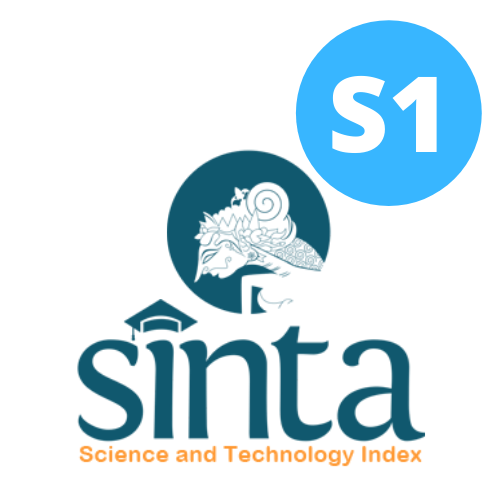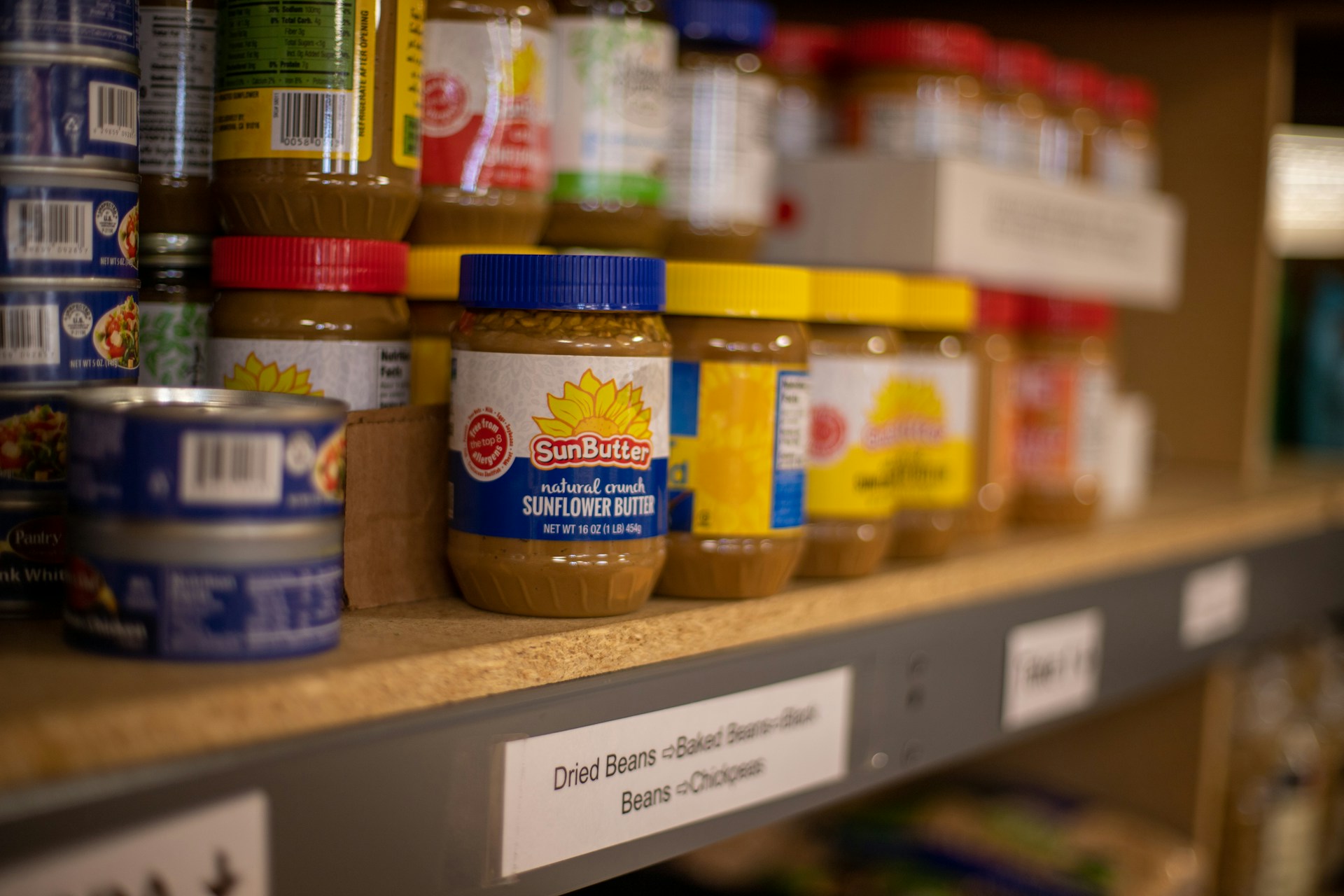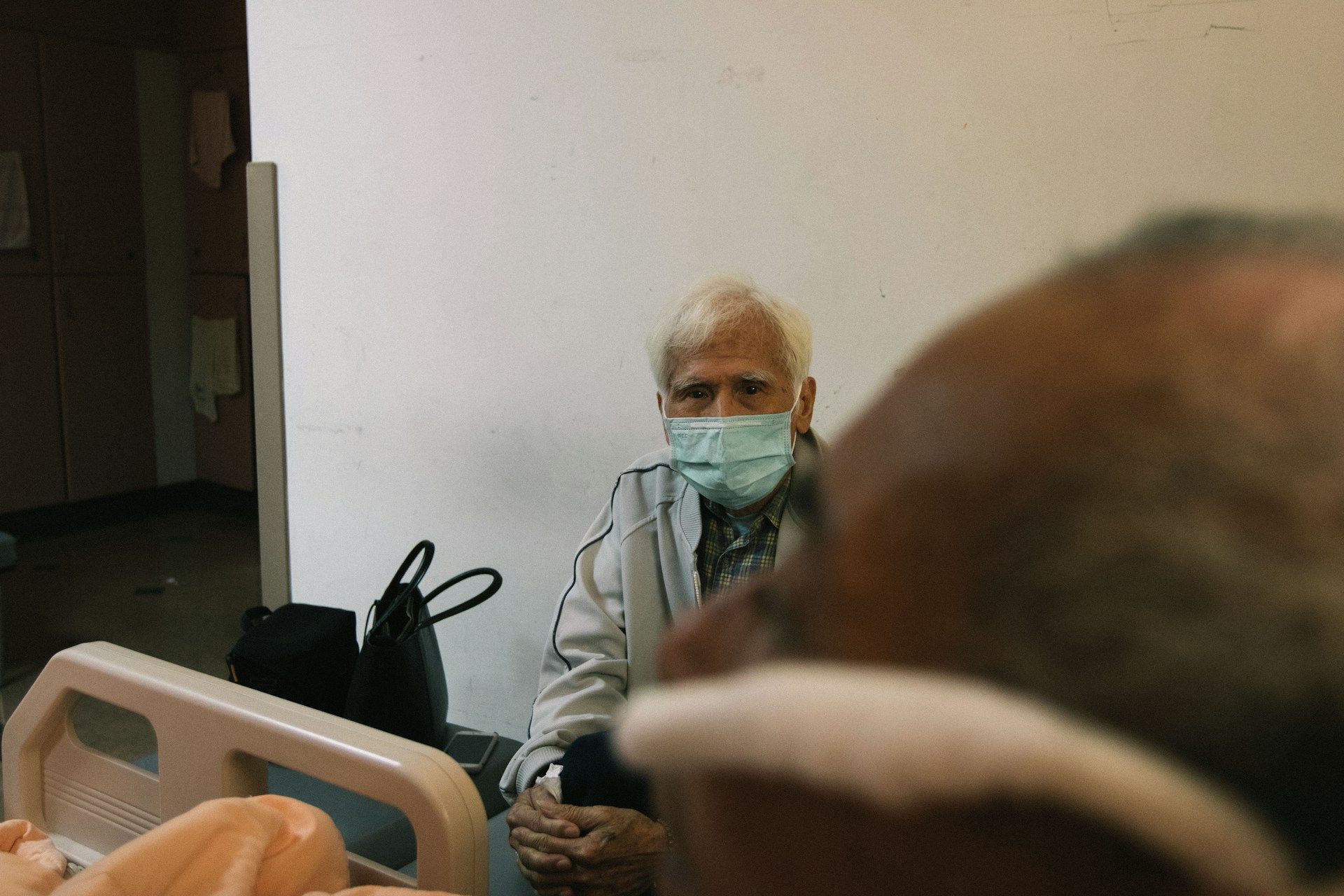Accuracy of Dietary Assessment Methods as a Measurement of Micronutrient Intake in Adolescents: Scoping Review
Akurasi Metode Penilaian Konsumsi Pangan sebagai Pengukuran Asupan Mikronutrien pada Remaja: Scoping Review

Downloads
Background: Micronutrient deficiency, including iron, vitamin A, B-12 and folic acid, can cause anemia and harm adolescent health. Accurate dietary assessment methods is crucial to detect micronutrient deficiencies, but existing methods, have limitations, necessitating a review to identify the accurate methods for assessing micronutrient intake in adolescents.
Objectives: To determine the accuracy of dietary assessment methods as suitable option for measuring micronutrient intake in adolescents.
Methods: This study utilized the Preferred Reporting Items for Systematic Review and Meta-Analysis extension for Scoping Review (PRISMA-ScR) flowchart approach. Article were identified from ScienceDirect, PubMed, Scopus, Google Scholar. Articles were included if participants aged 10-19 years, published between 2014-2024, written in English/Indonesian, original research articles and studies related to validation of dietary assessment methods for micronutrient intake. The keywords were "micronutrient intake" OR "dietary intake" AND "dietary assessment" OR "validity" AND "adolescent".
Discussions: 1157 articles were identified, 7 met the eligibility criteria, including 50 to 1081 adolescent. The Semi-Quantitative Food Frequency Questionnaire (SQ-FFQ) method was valid for sodium, niacin, folate, thiamine, calcium, phosphorus and reproducible for vitamin A, vitamin C, thiamine, riboflavin, niacin, iron, calcium, phosphorus, potassium, β-carotene. The Food Frequency Questionnaire (FFQ) method was valid for riboflavin, vitamin C, calcium, serum iron biomarkers, and reproducible for retinol, thiamine, riboflavin, vitamin C, vitamin D, iron, calcium. The 24-hour Dietary Recall (24hDR) method showed acceptable validity for serum iron biomarkers.
Conclusions: The SQ-FFQ, completed by adolescents with instruction of nutritionist, using a shorter food list and time intervals, has higher relative validity and reproducibility.
Sari, P. ; et al. Anemia among Adolescent Girls in West Java, Indonesia: Related Factors and Consequences on the Quality of Life. mdpi.com (2022). https://doi.org/10.3390/nu14183777.
Ara, G. et al. Factors Affecting the Micronutrient Status of Adolescent Girls Living in Complex Agro-aquatic Ecological Zones of Bangladesh. Sci. Rep. 13, 1–12 (2023). https://doi.org/10.1038/ s41598-023-33636-8
Hormenu, T. Dietary Intake and Its Associated Factors among in-school Adolescents in Ghana. PLoS One 17(5), 1–13 (2022). https://doi.org/10.1371/journal.pone.0268319
Ariyo, O., Alabi, O., Aleru, E. O. & Ojo, T. J. Effect of Emotion-based Nutrition Messages on Consumption of Calcium-rich Foods among early Adolescents in Ogbomoso, Nigeria. Dialogues Heal. 2, 100130 (2023). https://doi.org/10.1016/j.dialog.2023.100130
Azupogo, F., Abizari, A.-R., Osendarp, S. J. M., Feskens, E. J. & Brouwer, I. D. Ten2Twenty-Ghana: Study Design and Methods for an Innovative Randomized Controlled Trial with Multiple-Micronutrient–Fortified Biscuits among Adolescent Girls in Northeastern Ghana. Curr. Dev. Nutr. 5, nzaa184 (2021). https://doi.org/10.1093/cdn/nzaa184
Enyew, E. B. et al. Micronutrient Intake and Associated Factors among Pregnant Women in East Africa : Multilevel logistic regression analysis. PLoS One 18(4), 1–13 (2023). https://doi.org/10.1371/journal.pone.0281427
Querol, S. E., Gill, P., Iqbal, R., Kletter, M., Ozdemir, N. & Al-Khudairy L. Adolescent Undernutrition in South Asia: A Scoping Review. Nutr. Research Review. (2022). https://doi.org/10.1017/S0954422421000068
Singh, S. et al. Micronutrients and Cognitive Functions among Urban school-going Children and Adolescents : A Cross-sectional Multicentric Study from India. PLoS One 18 (2), 1–14 (2023). https://doi.org/10.1371/journal.pone.0281247
Knijff, M., Roshita, A., Suryantan, J., Izwardy, D. & Rah, J. H. Frequent Consumption of Micronutrient-Rich Foods is Associated with Reduced Risk of Anemia among Adolescent Girls and Boys in Indonesia: A Cross-Sectional study. Food and Nutrition Bulletin (2021) https://doi.org/10.1177/0379572120977455
Bailey, R. L., West, K. P. & Black, R. E. The Epidemiology of Global Micronutrient Deficiencies. Ann. Nutr. Metab. 66, 22–33 (2015). https://doi.org/10.1159/000371618
Stevens, G. A. et al. Micronutrient Deficiencies among Preschool-aged Children and Women of Reproductive Age Worldwide : A Pooled Analysis of Individual-level Data from Population-representative Surveys. Lancet (London, England) 10, 1590–1599 (2022). https://doi.org/10.1016/S2214-109X(22)00367-9
Bush, L. A. et al. Measuring Energy, Macro and Micronutrient Intake in UK Children and Adolescents: A Comparison of Validated Dietary Assessment Tools. BMC Nutr. 5, (2019). https://doi.org/10.1186/S40795-019-0312-9
Davies, A. et al. Yarning about Diet : The Applicability of Dietary Assessment Methods in Aboriginal and Torres Strait Islander Australians — A Scoping Review. Nutrients 15, 787 (2023). https://doi.org/10.3390/nu15030787
Ruoangsinghe, W. S., Perera TS, H. & Wickramartne M, N. A Comprehensive Review on Dietary Assessment Methods in Epidemiological. J Pub Heal. Nutirtion 3, 204 (2020).
Kiani, A., Medori, M., Dhuli, K., Donato, K., Caruso, P., Fioretti, F., Perrone, M. A., Ceccarini, M. R, Manganotti, P., Nodari, S., Codini, M., Beccari, T. & Bertelli, M. Clinical Assessment for Diet Prescription. (2022). https://doi.org/10.15167/2421-4248/jpmh2022.63.2S3.2753
Naska, A., Lagiou, A. & Lagiou, P. Dietary Assessment Methods in Epidemiological Research: Current State of the Art and Future Prospects. F1000Research 6, 1–8 (2017). https://doi.org/10.12688/f1000research.10703.1
Bailey, R. L. Overview of Dietary Assessment Methods for Measuring Intakes of Foods, Beverages , and Dietary Supplements in Research Studies. Curr. Opin. Biotechnol. 70, 91–96 (2021). https://doi.org/10.1016/j.copbio.2021.02.007
Sabir, Z., Rosendahl-Riise, H., Dierkes, J., Dahl, H. & Hjartåker, A. Comparison of Dietary Intake Measured by a web-based FFQ and Repeated 24-hour Dietary Recalls: the Hordaland Health Study. J. Nutr. Sci. 11, 1–10 (2022). https://doi.org/10.1017/jns.2022.97
Burrows, T. L., Ho, Y. Y., Rollo, M. E. & Collins, C. E. Validity of Dietary Assessment Methods When Compared to the Method of Doubly Labeled Water: A Systematic Review in Adults. Front. Endocrinol. (Lausanne). 10, (2019). https://doi.org/10.3389/fendo.2019.00850
Dao, M., Subar, A., W-M, M., Cade, J. E., Burrows, T., Golley, R., Forouhi, N., Pearce, M. & Holmes, B. Dietary Assessment Toolkits: An Overview. Public Health Nutrition. (2019). https://doi.org/10.1017/S1368980018002951
Munn, Z. et al. Systematic Review or Scoping Review? Guidance for Authors When Choosing Between a Systematic or Scoping Review Approach. BMC Med. Res. Methodol. 18:143, 147–160 (2018). https://doi.org/10.4324/9781315159416
Tricco, A. C. et al. PRISMA Extension for Scoping Reviews (PRISMA-ScR): Checklist and Explanation. Ann. Intern. Med. 169, 467–473 (2018). https://doi.org/10.7326/M18-0850
Humaira, R. Z. & Kartini, F. Analisis Faktor Risiko Anemia pada Balita : Scoping Review. J. Kebidanan Indones. 13, 86–93 (2022). https://doi.org/10.36419/jki.v13i2.632
Leclercq, V. et al. Meta-analyses Indexed in PsycINFO had a better Completeness of Reporting when they Mention PRISMA. J. Clin. Epidemiol. 115, 46–54 (2019).
Collese, T. S. et al. Evaluation of the Validity of a Food Frequency Questionnaire and 24-Hour Dietary Recall to Assess Dietary Iron Intake in Children and Adolescents from the South American Youth/Child Cardiovascular and Environmental Study. J. Acad. Nutr. Diet. 122, 384–393 (2022). https://doi.org/10.1016/j.jand.2021.07.005
Silva, A. L., Fragoso, M. I. C. J., Neto, F. M. C. dos S., Bento, C. P. F. N. M. & Teles, J. M. V. Relative Validity of a Semi-Quantitative Food Frequency Questionnaire for Adolescents. Port. J. Public Heal. 38, 71–80 (2020). https://doi.org/10.1159/000510464
Notario-Barandiaran, L. et al. Biochemical Validation of a Self-administered Food Frequency Questionnaire to Assess Diet Using Carotenoids and Vitamins E and D in Male Adolescents in Spain. Antioxidants (2021). https://doi.org/doi:10.3390/antiox10050750
Rodriguez, C. A. et al. Development and Validation of a Food Frequency Questionnaire to Estimate Intake among Children and Adolescents in Urban Peru. Nutrients 9, (2017). https://doi.org/10.3390/nu9101121
Yum, J. & Lee, S. Development and Evaluation of a Dish-based Semiquantitative Food Frequency Questionnaire for Korean Adolescents. Nutr. Res. Pract. 10, 433–441 (2016). https://doi.org/10.4162/nrp.2016.10.4.433
Notario-Barandiaran, L. et al. Reproducibility and Validity of a Food Frequency Questionnaire for Dietary Assessment in Adolescents in a Self-reported Way. Nutrients 12, 1–12 (2020). https://doi.org/10.3390/nu12072081
Øverby, N. C., Johannesen, E., Jensen, G., Skjaevesland, A. & Haugen, M. Test Retest Reliability and Validity of a Web-based Food-frequency Questionnaire for Adolescents Aged 13 14 to be Used in the Norwegian Mother and Child Cohort Study (MoBa). Food Nutr. Res. 1, 1–11 (2014). https://doi.org/10.3402/fnr.v58.23956
Qin, Y. et al. Reproducibility and Validity of a Semi-Quantitative Food Frequency Questionnaire for Children Aged 6–12 in Western China. Nutrients 15, (2023). https://doi.org/10.3390/nu15040856
Walker, J. L., Ardouin, S. & Burrows, T. The validity of Dietary Assessment Methods to Accurately Measure Energy Intake in Children and Adolescents Who are Overweight or Obese: A Systematic Review. Eur. J. Clin. Nutr. 72, 185–197 (2018). https://doi.org/10.1038/s41430-017-0029-2
Sun, C. et al. Reproducibility and Validity of a Semi-Quantitative Food Frequency Questionnaire for Assessing Dietary Intake of Vegetarians and Omnivores in Harbin, China. Nutrients 14, 3975 (2022). https://doi.org/10.3390/nu14193975
Sam, C. H. Y. et al. Relative Validity and Reproducibility of a Short Food Frequency Questionnaire to Assess Nutrient Intakes of New Zealand Adults. Nutrients 12, 1–12 (2020). https://doi.org/10.3390/nu12030619
Zekovic, M. et al. Validity of the Food Frequency Questionnaire Assessing the Folate Intake in Women of Reproductive Age Living in a Country without Food Fortification: Application of the Method of Triads. Nutrients 9, (2017). https://doi.org/10.3390/nu9020128
Vioque, J. et al. Reproducibility and Validity of a Short Food Frequency Questionnaire for Dietary Assessment in Children Aged 7–9 Years in Spain. Nutrients 11, 933 (2019). https://doi.org/10.3390/nu11040933
Cheng, Z., Shuai, P., Qiao, Q. & Li, T. Validity and Reliability of a Simplified Food Frequency Questionnaire: A Cross Sectional Study among Physical Health Examination Adults in Southwest Region of China. Nutr. J. 19, 1–11 (2020). https://doi.org/10.1186/s12937-020-00630-z
Tabacchi, G., Filippi, A., Amodio, E., Jemni, M., Bianco, A., Firenze, A. & Mammina, C. A meta-analysis of the Validity of FFQ Targeted to Adolescents. Public Health Nutr. 19(7), 1168–1183 (2015). https://doi.org/10.1017/S1368980015002505
Wark, P. A. et al. Validity of an Online 24-h Recall Tool (myfood24) for Dietary Assessment in Population Studies: Comparison with Biomarkers and Standard Interviews. BMC Med. 16, 136 (2018). https://doi.org/10.1186/s12916-018-1113-8
Copyright (c) 2024 Amerta Nutrition

This work is licensed under a Creative Commons Attribution-ShareAlike 4.0 International License.
AMERTA NUTR by Unair is licensed under a Creative Commons Attribution-ShareAlike 4.0 International License.
1. The journal allows the author to hold the copyright of the article without restrictions.
2. The journal allows the author(s) to retain publishing rights without restrictions
3. The legal formal aspect of journal publication accessibility refers to Creative Commons Attribution Share-Alike (CC BY-SA).
4. The Creative Commons Attribution Share-Alike (CC BY-SA) license allows re-distribution and re-use of a licensed work on the conditions that the creator is appropriately credited and that any derivative work is made available under "the same, similar or a compatible license”. Other than the conditions mentioned above, the editorial board is not responsible for copyright violation.












































